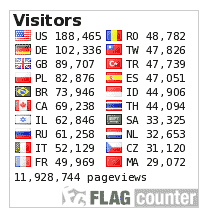Classroom Activities to Promote Students' Literacy Development
Keywords:
classroom activities, literacy skills, student literacyAbstract
Literacy leads students to academic success. The power of literacy does not only lie in the person’s ability to read and write, but also in the person’s capacity to apply these skills effectively for connecting, interpreting, and discerning the intricacies of the world. The purpose of this study was to describe various learning activities in grade one Ellipse Class. The study was descriptive, in which the researcher described the phenomena in the setting without attempting to make inferences or causal statements. The study was conducted at Budi Mulia Dua Pandeansari Elementary School in Yogyakarta. The instruments of this study were observation sheets, documentations, and interview protocols. The participants of this study were ten students and two classroom teachers of Ellipse Class. The results show that there are interactive activities which are able to promote students’ literacy development such as reading activities, diary writing, project-based activities, and story writing.
Literasi mendorong kesuksesan akademis siswa. Kekuatan literasi tidak hanya terletak pada kemampuan sesesorang untuk membaca dan menulis, tetapi juga terletak pada kemampuan seseorang untuk menggunakan ketrampilan-ketrampilan ini secara efektif untuk menghubungkan, menginterpretasikan, dan mengurai kerumitan dunia. Tujuan penelitian ini adalah untuk menggambarkan berbagai kegiatan di kelas yang dilaksanakan di Kelas Satu Ellipse. Penelitian ini merupakan penelitian deskriptif, peneliti mendeskripsikan fenomena di lapangan tanpa berusaha mencampuri fakta yang terjadi di lapangan. Penelitian ini diadakan di SD Budi Mulia Dua Pandeansari Yogyakarta. Dalam penelitian ini, peneliti menggunakan berbagai instrumen diantaranya lembar observasi, dokumentasi, dan pedoman wawancara. Subjek penelitian ini adalah sepuluh siswa kelas satu Kelas Ellipse. Hasil penelitian menunjukkan bahwa ditemukan berbagai kegiatan interaktif di kelas yang dapat menunjang perkembangan literasi siswa diantaranya kegiatan membaca, menulis buku harian, kegiatan berbasis projek, dan kegiatan menulis cerita.
Downloads
References
Antilla, A.J. (2013). The Effect of Early Literacy Development on Academic Success in the Educational Setting and Implications for Educational Leaders and Teachers. Master Thesis. Unpublished. Northern Michigan University, Northern Michigan.
Bagheri, S & Pourgharib, B. (2013). An Investigation of the Effect of Journal Writing on EFL Learners’ Oral Production. International Research Journal of Applied and Basic Sciences. Volume 4, No.10.
Bignold, H. (2003). Gender Difference and Reading. Journal of School Librarian. Volume 50. No.3 (pp 122-133).
Cakir, I. (2004). Designing Activities for Young Learners in EFL Classroom. Gazi Egitim Fakulties Dergisi. Volume 24. No.3 (pp 101-112).
Cameron, L. (2001). Teaching Language to Young Learners. Cambridge: Cambridge University Press.
Gunawan, S.A. (12 March 2016). Indonesia Second Least Literate of 61 Nations. The Jakarta Post. Available on http://www.thejakartapost.com/news/2016/03/12/indonesia-second-least-literate-61-nations.html
Joyce, B. et. al. (2009). Models of Learning Tools for Teaching. Glasgow: Bell and Brain Ltd.
Leedy & Ormrod. (2001). Practical Research Planning and Design. New Jersey: Pearson Merill Prentice Hall.
Lems, K. et. al. (2010). Teaching Reading to English Language Learners: Insight from Linguistics. New York: The Guilford Press.
Linse, C,T. (2005). Young Learners. USA: Mc. Graw Hill.
McKay, P. 2006. A special case for young learner language assessment in J.C. Alderson and L. F. Bachman (eds) Assessing Young Language Learners. Cambridge: Cambridge University Press
Murray, D.E & Christison. (2011). What English Language Teachers Need to Know Vol. II: Facilitating Learning. New York: Routledge.
Neuman, S. (2000). Learning to Read and Write: Developmentally Appropriate Practice for Young Children. DC: National Association for the Education of Young Children.
Nunan, D. (1989). Designing Task for the Communicative Classroom. Cambridge: Cambridge University Press.
Nurfatimah. (May 2016). Developing Literacy Skills Through Learning Product in English for Young Learners. Paper Presented in TEYLIN Conference at Ahmad Dahlan University Yogyakarta.
Palani. (2012). Promising Reading Habits and Creating Literate Social. International Reference Journal. Volume III. No.1 (pp 91-99).
Philips, L.M. (2003). Middle Grade Readers’ Ability to Interpret Pragmatic Meaning. Other Ways of Seeing: Diversity in Language and Literacy. Volume 1. (pp 223-230).
Willis, J. (1996). A Framework for Task-Based Learning. Essex: Addison Wesley Longman Limited.
Published
How to Cite
Issue
Section
This is an open-access article distributed under the terms of the Creative Commons Attribution-ShareAlike 4.0 International License which permits unrestricted use, distribution, and reproduction in any medium. Users are allowed to read, download, copy, distribute, search, or link to full-text articles in this journal without asking by giving appropriate credit, providing a link to the license, and indicating if changes were made. All of the remixes, transform, or build upon the material must distribute the contributions under the same license as the original.











